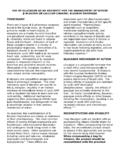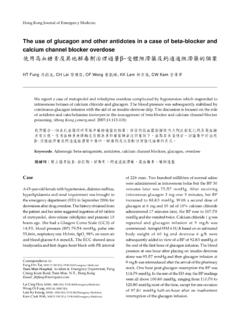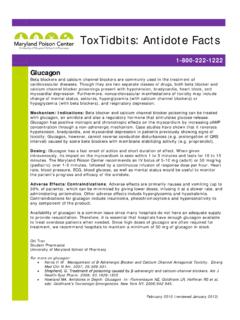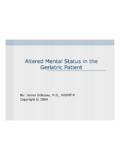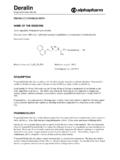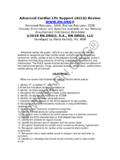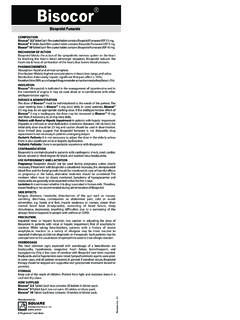Transcription of PENICILLIN ALLERGENIC DETERMINANTS - …
1 PENICILLIN ALLERGENIC DETERMINANTS ( DAP ) DESCRIPTION Main ALLERGENIC DETERMINANTS involved in type I or immediate hypersensitivity to benzylpenicillin and related antibiotics (beta-lactam), isolated, modified, and stabilised by means of lyophilisation. For exclusive use in the diagnosis of type I or immediate hypersensitivity to benzylpenicillin and related antibiotics (beta-lactam) by means of cutaneous tests (prick and intradermal tests). QUALITATIVE AND QUANTITATIVE COMPOSITION PENICILLIN ALLERGENIC DETERMINANTS are classified and labelled as: - Major Determinant Benzylpenicilloyl poly-L-lysine (PPL): formed by the bonding of the primary determinant of benzylpenicillin and related antibiotics (beta-lactam) to lysine chains.
2 - Minor Determinant Mix (MDM): formed by Sodium benzylpenicillin, Benzylpenicilloic acid, and Sodium benzylpenicilloate, which are involved in the sensitisation to benzylpenicillin and related antibiotics (beta-lactam). The DAPs quali-quantitative composition is the following: PPL Vial: Benzylpenicilloyl poly-L-lisine mg Mannitol 20 mg MDM Vial: Sodium benzylpenicillin mg Benzylpenicilloic acid mg Sodium benzylpenicilloate mg Mannitol 20 mg Diluent Vial: Sodium Chloride.
3 Potassium dihydrogen phosphate Disodium hydrogen phosphate 2 hydrate Potassium chloride Water for injection 1 ml PHARMACEUTICAL FORM AND CONTAINER CONTENT Vials containing lyophilised powder and diluent for injectable solution. DAP: diagnostic set 3 vials containing PPL (benzylpenicilloyl poly-L-lysine) lyophilised powder. 3 vials containing MDM, Minor Determinant Mix (Sodium benzylpenicillin, Benzylpenicilloic acid, and Sodium benzylpenicilloate), lyophilised powder.
4 6 diluent vials, each containing 1 ml of saline solution in phosphate buffer. Individualised vials containing: PPL: Lyophilised powder of Benzylpenicilloyl poly-L-lysine (PPL) MDM: Lyophilised powder of Minor Determinant Mix (MDM) (Sodium benzylpenicillin,Benzylpenicilloic acid, and Sodium benzylpenicilloate). Diluent Saline solution in phosphate buffer (1 ml) HOLDER AND MANUFACTURER Diater S. A. Calle Soledad n 37; 28330 San Mart n de la Vega. (Madrid) Spain. Telephone: +34 91 808 77 27 Fax: +34 91 895 80 24 E-mail: THERAPEUTIC INDICATIONS Diagnostic evaluation, by means of cutaneous tests (prick and intradermal tests), of allergic states, sensitisation, or type I hypersensitivity, in those cases in which allergy to beta-lactam antibiotics is suspected.
5 CONTRAINDICATIONS A pathological dermal alteration of the area intended for the cutaneous tests, as well as any other pathological state which may considerably affect the patient s general condition, constitute contraindications for the performance of cutaneous tests. The course of an acute allergic reaction induced by any ALLERGENIC substance constitutes a contraindication for the performance of cutaneous tests. Antihistamines, corticosteroids, cromones and, in general, any medication which exhibits collateral anti-allergic activity, must be suspended 1 week prior to the cutaneous examination.
6 The use of beta-blocker or ACE inhibitor therapy also constitutes a contraindication for the performance of cutaneous tests; therefore, always in agreement with your prescribing physician and with blood pressure monitoring, it must be suspended during the 48 hours prior to the test. Pregnancy, breastfeeding, and, generally, being under six years of age, constitute contraindications for the performance of cutaneous tests; however, it should always be left to the Specialist s discretion, who must determine the convenience of, and the best timing for, the diagnostic cutaneous examination on the basis of the risk benefit required by each specific situation.
7 The contraindications derived from the administration of adrenaline must be considered, given the potential induction of a secondary allergic reaction. SPECIAL WARNINGS The performance of cutaneous tests during pregnancy is not recommended, given the additional risk the potential induction of an anaphylactic reaction entails. After performing the cutaneous tests, the patient must remain under observation for at least 30 minutes. In addition, it is advisable that the patient avoid alcohol consumption, intense physical exercise, and hot baths or showers during the hours prior and subsequent to the test.
8 In the event that the patient is under treatment with allergen immunotherapy, it is advisable that the cutaneous tests be performed with a 1-week minimum interval from the preceding immunotherapy dose. Similarly, the interval between the cutaneous tests and administration of an immunotherapy dose should be 2 or 3 days. PRECAUTIONS FOR USE Cutaneous tests using DAP must begin by studying cutaneous reactivity to the Major Determinant (PPL). The minor determinant mix (MDM) should only be used when the result of the cutaneous test using the Major Determinant (PPL) has been negative.
9 Cutaneous tests must always start with the prick test technique. Intradermal tests should be used only when the prick tests are negative. As a preventive measure, it is advisable to apply a set of dilutions, at a ratio of 1:100 and 1:10, prior to starting the Major Determinant (PPL) and/or the minor determinant mix (MDM) intradermal tests. In patients with symptoms compatible with a severe reaction, or with a high risk, the dilutions for the cutaneous tests should begin at 1:1,000. In cutaneous tests, it is advisable to follow the algorithm for the study of sensitivity to PENICILLIN DETERMINANTS shown below: Major Determinant PPL prick test === positive (non-diluted) Negative Major Determinant PPL intradermal test === positive (recommended dilution 1:10) Negative Major Determinant PPL intradermal test === positive (non-diluted) Negative Minor determinant mix MDM prick test == positive (non-diluted) Negative Minor determinant mix MDM intradermal test == positive (recommended dilution 1.)
10 100) Negative Minor determinant mix MDM intradermal test positive (recommended dilution 1:10) Negative Minor determinant mix MDM intradermal test positive (non-diluted) Negative The dilutions must be performed while maintaining the required appropriate aseptic conditions and using the diluents which may be requested to that end. INTERACTIONS Antihistaminic, corticosteroids, cromones, and, in general, any medications which exhibit collateral anti-allergic activity have an interaction capacity which alters the results that may be obtained after performing the cutaneous tests.

